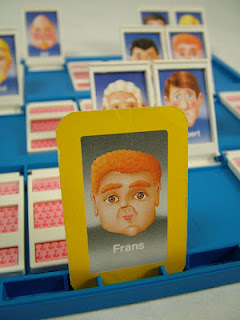 |
|
| http://www.flickr.com/photos/unloveable/2398625902/ |
Bike Trail Task
Painting Tape
Sprinkler Task
I am frustratingly mathematical. Ask my wife. I see the world as a combination of, in the words of David Berlinski, absolutely elementary mathematics.(AEM). The path of a yo-yo, the tiles in the mall, and the trail of wetness after a bike rides through a puddle are all dissected with simple, mathematical phenomenon. The nice part about AEM is that I can talk about it to almost anyone. People are (vaguely) familiar with graphs, geometric patterns, and circles even if they can’t decipher what practical implications they have on their city block. Unfortunately, people (and students) don’t often want to hear about them–they need to see them.
I can remember the look on my mother’s face when I broke out the silverware to show her that the restaurant table corner was not square. Without a ruler, I showed her that trigonometry allows us to rely on ratio rather than set measurements. As I was in the midst of showing her that the 3-4-5 knife-length rule was breached, the waitress came. Mom was horrified; I was thrilled.
Creating PBL 3.0
I have been on my project-based learning journey for a while now. This blog has served as the main receptacle for my inspirations, ideas, successes, failures, and reflections. It is now time to document my next step: wide scale revision.
This post will be divided into two main sections:
- A look back at the posts that brought me to this point. (Reading them may provide some context, but not reading them will provide you with more free time…your call)
- A look ahead into my revisions and their rationale. I will describe the new administrative and assessment framework around the projects and provide links to the first completed framework online.
Those of you who follow me on twitter or read this blog regularly know I have been struggling to implement wide scale Project-based Learning (PBL) into my Workplace and Apprenticeship mathematics courses. This strand of classes is probably unfamiliar to those outside of Western Canada. I have included a link to our provincial curriculum below. You can skip to the outcomes and indicators to view which topics need to be addressed. (Page 33)
If you are not careful, teaching can become very boring, very quickly. Most teachers of specialized areas teach the same content arranged in the same manner numerous times throughout a career. It is no wonder teachers are constantly warned of burnout. Opening up space for student initiative serves a two-fold purpose:
First, the extra freedom allows students to create significance in memorable ways.
Second, the sheer variety of student queries can raise questions for teachers.
The school year is winding down for me and my project-based grade ten classes. I have found myself looking at the curriculum more and more as the final day approaches. I was told by many that content coverage would be impossible in a project-based setting; this only made me more anxious. Compounding this problem, I needed a substitute teacher for a day and do not like throwing them into a project setting without any briefing. In order to accommodate them, I chose to photocopy a worksheet on the Pythagorean Theorem for my students while I was gone. When I alerted them of this, the response was clear:
Using Real-Time Graphs
I have a class of grade nine students this semester that are part of a stretch program. This essentially means that they get 160 hours to complete a 120 hour course. The class is designed to accommodate the transition from elementary school (Grades 1-8) into high school (Grades 9-12) for those students who feel uncomfortable with their math ability.
It also affords me a few extra days here and there to stress certain topics. One of my foci this semester has been pattern modelling. Essentially, we work with various patterns and develop generic rules to describe their behaviour. Linear relations will be our finish line, but I am making sure to provide ample concreteness before abstracting into notations.
This is the finale of a series of blog posts detailing a student posed project. To get the full picture, begin reading at part one:
